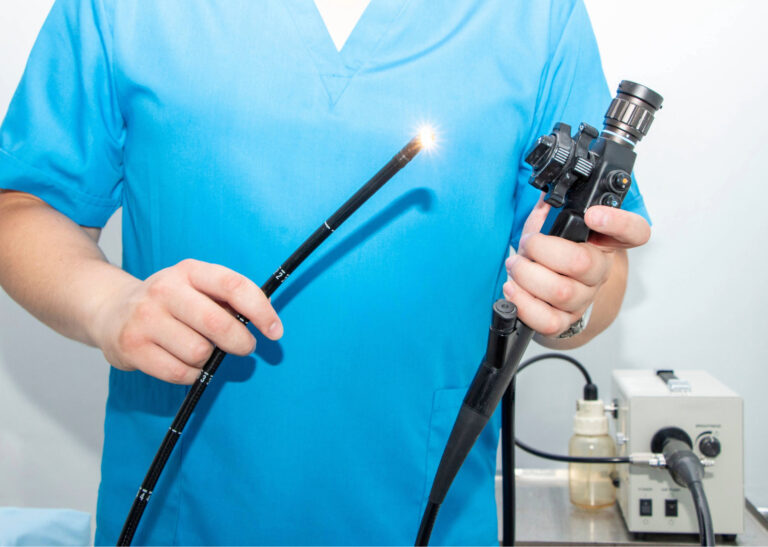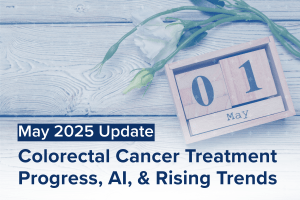An upper endoscopy, also called an upper gastrointestinal (GI) endoscopy, is a procedure used to diagnose and treat problems in the upper part of the digestive system. This minimally invasive procedure involves the insertion of a thin, flexible tube equipped with a small video camera, allowing a detailed examination of the lining of the upper GI tract, including the esophagus, stomach, and the first part of the small intestine (duodenum).
Indications for Upper GI Endoscopy
Upper endoscopy is used to evaluate and manage various symptoms and conditions affecting the upper digestive system, such as:
1. Diagnostic Evaluation
An upper endoscopy is often recommended by your health care provider to evaluate unexplained symptoms or concerns, such as:
- Upper abdominal pain or persistent heartburn.
- Difficulty swallowing (dysphagia).
- Persistent nausea or vomiting.
- Unexplained weight loss.
- Gastrointestinal bleeding, such as blood in your stool or vomit.
- Iron deficiency anemia that cannot be explained by other causes.
The procedure can help pinpoint the root cause of these symptoms, offering clarity and direction for further treatment.
2. Monitoring and Surveillance
After certain interventions, such as removing polyps or treating strictures, an endoscopy may be repeated to monitor healing or ensure no further complications arise. This procedure allows your doctor to carefully examine the lining of the upper digestive tract for any changes that require attention.
3. Therapeutic Uses
An upper endoscopy isn’t just for diagnosis. It’s also a procedure to diagnose and treat problems like:
- Removing polyps.
- Widening a narrowed section of the esophagus (stricture dilation).
- Managing bleeding in the upper digestive system.
Preparing for the Procedure
Your health care provider will give you specific instructions to prepare for your upper endoscopy procedure, which may include:
1. Fasting Guidelines
You’ll usually be asked to avoid eating or drinking for 8 hours before the procedure. This fasting period ensures that your stomach and upper GI tract are clear, allowing the doctor to get an unobstructed view of the lining of your upper GI.
2. Medication Adjustments
Certain medications, especially blood thinners or those for chronic conditions like diabetes, may need to be stopped or adjusted temporarily. Your doctor will give you specific instructions about which medications to take or avoid.
3. Arranging Transportation
Since sedation will be used during the procedure, you’ll need someone to drive you home after the procedure. Make arrangements in advance with a friend or family member.
What Happens During an Upper Endoscopy?
The procedure is done as an outpatient procedure with sedation to ensure comfort. Here’s what you can expect:
Before the Procedure:
You may be given additional instructions about positioning and sedation.
Sedation or anesthesia is administered to keep you comfortable during the procedure.
During the Procedure:
You’ll lie on your side, and the endoscope—a thin, flexible tube with a small video camera—is gently inserted through your mouth.
The doctor will examine the upper part of the digestive tract, including the inner lining of the upper GI system, looking for abnormalities such as ulcers or masses.
Interventions:
The procedure can also be used to treat issues, such as dilating strictures or removing polyps, during the same session.
Post-Procedure Care and Recovery
After the procedure:
- Patients typically recover from sedation within a few hours and may feel mild throat discomfort.
- Arrange for someone to drive you home after the procedure as you won’t be able to drive due to sedation.
- Most patients can resume normal activities by the rest of the day, following any specific instructions provided by their doctor.
Possible Risks and Complications
While an upper endoscopy is generally safe, possible complications include:
- Minor bleeding from biopsy sites.
- Perforation of the GI tract (rare).
- Reactions to medications used for sedation.
Benefits of Upper Endoscopy
- Early Diagnosis:
The procedure can help detect conditions in the upper part of the digestive system early, leading to more effective treatments. - Minimally Invasive:
As an outpatient procedure, it has minimal recovery time and is less invasive than surgical alternatives. - Therapeutic Advantages:
In some cases, the doctor can perform treatments, such as polyp removal, during the same procedure.
An upper endoscopy is a valuable procedure to diagnose and treat problems in the upper part of the digestive system. With its ability to examine the upper part of the small intestine, this procedure provides both diagnostic and therapeutic benefits, ensuring better health outcomes.
If you have questions or concerns, consult your health care provider.
FAQs
Understanding upper endoscopy is crucial for anyone requiring digestive health evaluation. This procedure, also known as esophagogastroduodenoscopy (EGD), involves the use of a thin, flexible endoscope equipped with a camera to examine the stomach and duodenum. In contrast, endoscopy is a broader term that can refer to various procedures used to visualize different parts of the body, not limited to the gastrointestinal tract.
The actual endoscopy procedure typically takes 15-30 minutes, during which anesthesia may be administered for patient comfort. However, the entire appointment, including prep time and recovery, can take a few hours. If you have conditions like diabetes and digestive and kidney diseases, your doctor may recommend adjustments to your medications beforehand, as outlined by the National Institute of Diabetes guidelines.
An upper endoscopy is a procedure in which a doctor examines the upper part of the digestive system, including the esophagus, stomach, and the beginning of the small intestine.
An upper endoscopy can help identify and diagnose various conditions, including inflammation, ulcers, infections, or abnormal growths in the esophagus, stomach, and duodenum. While the risk of complications is low, your doctor will review the potential risks and benefits before proceeding. If you may have an upper digestive issue, this procedure called EGD is an essential diagnostic tool that provides clear insights into gastrointestinal health.
An upper endoscopy procedure can help detect bacterial infections such as Helicobacter pylori, a common cause of stomach ulcers and chronic gastritis. It is also effective in identifying fungal infections like Candida esophagitis, which is often seen in individuals with weakened immune systems. Additionally, an upper endoscopy may reveal signs of viral infections, such as cytomegalovirus (CMV) esophagitis or herpes simplex virus (HSV) esophagitis, both of which can affect the esophagus.
No, you won’t be fully awake during the procedure. You’ll receive moderate sedation, which will keep you comfortable and relaxed, though you may feel drowsy afterward. It’s important to follow your doctor’s instructions about when to stop taking certain medications before the procedure and to eat or drink lightly afterward to aid recovery.
In the hours leading up to your endoscopy, you’ll typically need to avoid all food and drink. Your doctor will provide specific instructions regarding fasting times. If you have digestive and kidney diseases or other conditions like diabetes, they may provide additional guidance on managing your diet and medications.
No, due to the sedation, you won’t be able to drive yourself home after receiving anesthesia. It’s essential to arrange for someone to drive you home, such as a friend or family member, to ensure your safety.
Depending on the reason for the investigation, there might be alternative tests available, such as X-rays or imaging studies. However, endoscopy often provides the most detailed view of the upper digestive tract and allows for tissue sampling if needed. Discuss your options with your doctor, especially if you have concerns about fasting, sedation, or the need to stop taking medicine before the procedure.



























